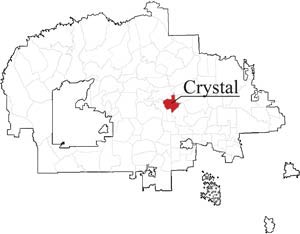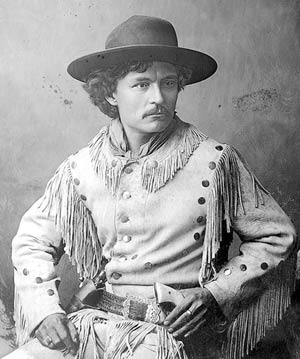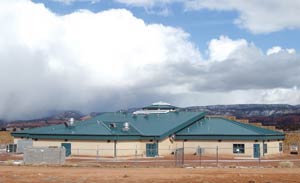Dodge country
The mountains of Crystal produced the first tribal chairman
By CIndy Yurth
Tséyi' Bureau
CRYSTAL, N.M., February 28, 2013
(Editor's note: In an effort to chronicle the beauty and diversity of the Navajo Nation, as well as its issues, the Navajo Times has committed to visiting all 110 chapters in alphabetical order. This is the 24th in the series.)



(Times photo — Cindy Yurth)
SECOND FROM TOP: Henry "Chee" Dodge c. 1885
THIRD FROM TOP: The spacious new Crystal Multi-Purpose Building is nearing completion on Navajo Route 12, but not everybody is a fan. Some local seniors say they prefer the more intimate current senior center where they now meet for lunch.
N ot everybody likes the lavish new multi-purpose building going up on Navajo Route 12.
Finishing her Navajo taco at the old but spotless senior center a few miles up the hill from the new building, "Madge" wrinkles her nose at the mere mention of it.
"I don't see why we can't just stay here," she grouses. "We like it here."
"We're used to it," explains her friend "Myrtle."
We've changed their names because the ladies are afraid they will be judged by their peers for talking to a reporter.
"Here, we don't just talk this and that to anyone," sniffs Myrtle. "We're old-fashioned."
That may be, says Dave Peterson, one of the younger seniors enjoying lunch at the center, because all the young people have left Crystal.
Peterson, a rodeo announcer, likes the new building, and hopes it's the start of more development in this high-mountain chapter.
"You can't just think positive," he says. "You have to believe positive."
But, although he has lived here for years with his Navajo wife, Alice, he too has to watch what he says. As far as the townsfolk are concerned, he's an outsider — a half-Navajo, half-Shoshone from Wyoming.
Peterson understands. "As an Indian," he says, "you're always walking the line between traditional and modern, trying not to offend the young people or the old people."
But Crystal wasn't always so rooted in the past. This is the chapter that produced Henry "Chee" Dodge, the first modern leader of the Navajo tribe.
A Long Walk survivor who learned English from the soldiers and became a translator, Dodge was appointed "head chief of the Navajo" by the Bureau of Indian Affairs in 1883. He became the first chairman of the Navajo Business Council in 1922, and the first chairman of the reorganized Navajo Tribal Council 20 years later.
Several of his descendants still live in Crystal; his great-granddaughter, Debra Adams-McLaughlin, resides in his old house.
"It's beautiful. From the porch in the morning, you can see clear into the valley," she said. "He knew what he was doing."
Adams-McLaughlin and Dodge's granddaughter, Lorraine Dodge, are faculty members at Crystal Boarding School, a historic stone structure built during the elder Dodge's tenure after he convinced the Bureau of Indian Affairs to fork over some money to educate the tribe's children.
The pride of Crystal
The school was and is the pride of Crystal. In the old days, said Madge and Myrtle, it was the center of the community.
"In the fall," recalled Madge, "they would let people bring in their fruit and their corn and they could use the kitchen to can them."
"Everyone canned," added Myrtle. "Some people still do."
The school trained the townsfolk to sew mattresses for themselves or for sale, and hosted festive holiday dinners.
These days, the chapter house and the senior center have replaced the school as gathering places, but there's still a lot of interaction between the school and the community, said principal Alberto Castruita (who, according to the 2010 census, is the lone Hispanic in Crystal).
One of the teachers sponsors a thriving culinary club for the boarders, and they share their products with the local elders.
"Around Christmas it was bread," he said. "Last week it was Valentine cookies."
With only 108 students, the school also manages to field basketball, softball and volleyball tournaments that compete regionally.
"We try to make sure they have things to do," Castruita said, "since there isn't much in the community."
There isn't much, really nothing other than the school. But in the 1900s, the now-defunct Crystal Trading Post was one of the hoppingest places on the rez.
After taking over the post in 1897, trader J.B. Moore proceeded to revolutionize the Navajo rug business.
Before then, according to several published histories of rug weaving and trading posts, most Navajo weavers were producing blankets instead of rugs, turning them out quickly for cheap sale to tourists.
Moore recognized the value of the top-end market, establishing relationships with collectors in the east and publishing what must have been the first mail-order catalog on the reservation.
He convinced the local weavers to produce large rugs instead of blankets, go back to the subtle colors of the natural vegetable dyes, and use wool he had shipped off the reservation to be factory-cleaned.
He also introduced more intricate patterns he thought the collectors would like.
To this day weavings from Crystal are considered some of the highest quality on the Navajo Nation, and those from Moore's era fetch thousands of dollars at auction.
At Crystal Boarding School, weaving is taught as part of the Navajo culture class, with students producing tiny textiles on mini-looms.
Dodge and Adams-McLaughlin recalled a field trip to Sedona where they encountered a student's weaving for sale in a gift store.
"When the students saw the price tag on it, they all wanted to learn to weave," laughed Dodge.
The roof of the rez
One of the Nation's highest chapters at 8,000 feet, Crystal has to contend with snow throughout the winter.
"We've already had three or four snow days this year," said Castruita — a concept he has had to get used to after moving here from southern Arizona in 2010.
"This is nothing," scoffed Madge. "We used to get three feet every winter."
"This is probably the only place where Navajos built sleds," added Myrtle.
It's also a place where one has to be wary of wildlife, although no one could recall an attack on a human. Cougars and bobcats are occasionally spotted, and last summer a bear climbed onto the roof of the school and later scratched at the door of a teacher's house.
Most Crystalites appreciate the wildlife and wouldn't do more than fire a warning shot over a bear's head, Adams-McLaughlin reported.
Could the wild creatures and Crystal's pristine setting be a magnet for tourism?
The elders would have to change their "old-fashioned" mindset.
"All of us are descendants of the original families that lived here," Myrtle said "I don't think we would let someone from the outside just move in here and build."
As for people hiking in the Chuskas, she's not sure she approves.
"When we were growing up, the only time you hiked was to herd sheep or find horses," she said. "You didn't just walk up and down the mountains for no reason."
Crystal at a glance
Name — The English name "Crystal" was first used by early trader J.B. Moore. It's a rough translation of the Navajo name "Tónilts'ili" ("Crystal-Clear Water"), referring to a beautiful spring where residents got their water. "You should drink the water here if you want to stay well," said Crystal Boarding School Principal Alberto Castruita. "And that's straight from an IHS nurse."
Population — 311, down from 347 in 2000
Land area — 4.4 square miles
Elevation — at 8,000 feet, one of the Nation's highest chapters
Claim to fame — high-quality weavings; home of Chee Dodge, first Navajo tribal chairman
Assets — Crystal Boarding School, which is on the National Register of Historic Places; large new multi-purpose building under construction; cute, curmudgeonly seniors
Issues — no businesses, hard winters, isolation. The chapter has not had problems with feral horses in the past, but lately people have started to notice them.

